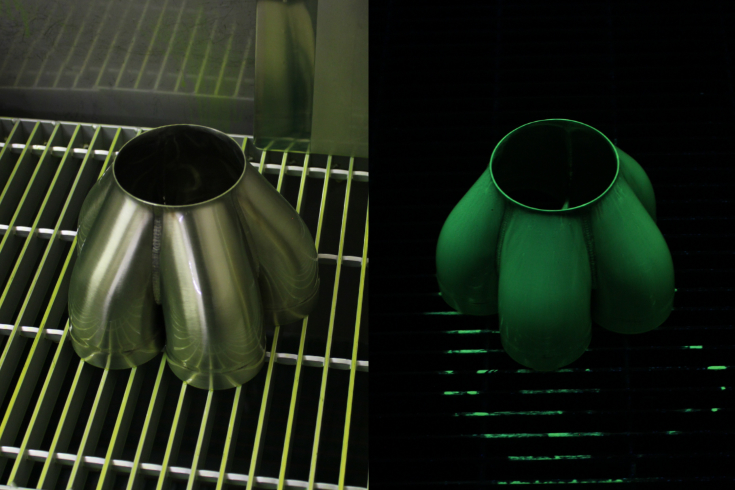Due to increased quality control requirements, Primary Designs now offer a non-destructive (NDT) quality inspection process using UV liquid dye penetrant inspection. This process is commonly used within precision engineering to identify any fine imperfections which may be missed by the naked eye.
A component, in our case an exhaust or bracket, is dipped in an ultra violet sensitive liquid, dried in a low temperature oven and dusted in a development powder to draw out the UV pigmentation of any leftover residue. Any additional residue left in the cracks arise to the surface and show up under an ultraviolet light.
After identification of a crack, the component can be taken and reworked to remove the identified imperfection. To be certain that a repair has been made up to standard, the part will then need to be re-dipped and retested again.
We use this method to reduce the chance of any of our products failing prematurely. Without crack detection and rectification, a larger crack can propagate under load, ultimately leading the part to potential failure.
An experienced and trained operator is essential when using this method to inspect welding quality. Conducting tests on rough surfaces such as welds can increase the difficulty of inspection as excessive penetrant could remain on the inspected part and produce false indications.
Here at Primary Designs we use an industry leading Magnaflux liquid penetrant inspection unit, custom built and optimised to ensure consistent test results across a variety of part sizes and components.
